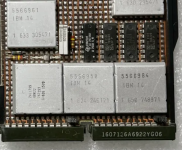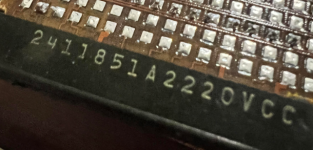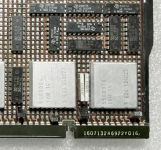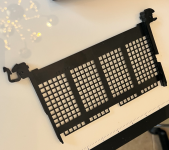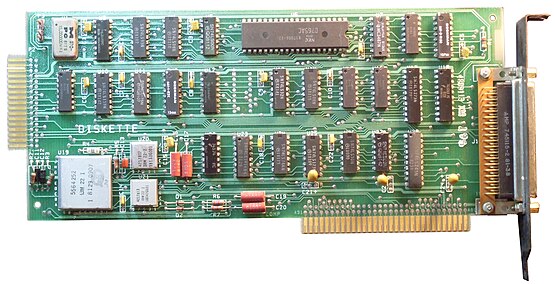voidstar78
Veteran Member
While this card LOOKS like it should be for an IBM 5100 or IBM 5110 (c. 1975-1978), I don't think it is. (and physically the card would fit into any slot of those systems)
It's possible maybe the IBM 5120 (aka IBM 5110-3) had a card like this - but I don't think so. The reason I don't think so is because the plastic "sleeve" that the card was in was quite different and wouldn't fit in the normal chassis of those systems.
So what other c. 1970s IBM systems used cards like this? I think the Datamaster/23 used more "ISA" 8-bit looking cards.
Listed below are the markings of the "siver tin can" chips. If these are consistent with the similar looking "IBM 14" and "IBM 22" chips that are found in the IBM 5100's, then these should be 6KB ROMs - except that nobody knows the pinout of these chips, or how to extract or image whatever 6KB content they might contain.
Note this particular card has no ICs, just some (what I think are) resistor packs (then little black capacitor parts along the four 24-pin green connectors at the "bottom"/base)
(* same numbers)
(** first number is same as the other *, but stuff after IBM 22 1 differs)
And it's hard to see, but these are "9x9" grid of pins on the backside - but only the outer square and "inner diamond" set of pins seem to actually be used.
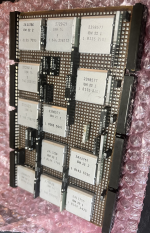
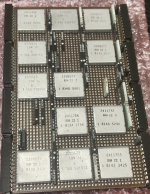
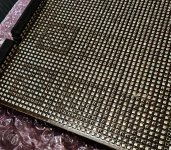
@stepleton
It's possible maybe the IBM 5120 (aka IBM 5110-3) had a card like this - but I don't think so. The reason I don't think so is because the plastic "sleeve" that the card was in was quite different and wouldn't fit in the normal chassis of those systems.
So what other c. 1970s IBM systems used cards like this? I think the Datamaster/23 used more "ISA" 8-bit looking cards.
Listed below are the markings of the "siver tin can" chips. If these are consistent with the similar looking "IBM 14" and "IBM 22" chips that are found in the IBM 5100's, then these should be 6KB ROMs - except that nobody knows the pinout of these chips, or how to extract or image whatever 6KB content they might contain.
Note this particular card has no ICs, just some (what I think are) resistor packs (then little black capacitor parts along the four 24-pin green connectors at the "bottom"/base)
| 2411756 IBM 22 2 1 8135 7290 |
| 2729414 IBM 14 9 1 146 266112 |
| 2729423 IBM 14 9 1 149 778912 |
| 2398577 IBM 22 1 8135 2101 (**) |
| 2729421 IBM 14 9 1 144 216112 |
| 2398577 IBM 22 2 1 8148 5001 (*) |
| 2411754 IBM 22 1 1 8134 1705 |
| 2729422 IBM 14 9 1 146 991512 |
| 2398577 IBM 22 1 1 8135 2101 (*) |
| 2398577 IBM 22 1 1 8135 2101 (*) |
| 2411757 IBM 22 2 1 8143 5230 |
| 2411755 IBM 22 1 1 8143 3425 |
(* same numbers)
(** first number is same as the other *, but stuff after IBM 22 1 differs)
And it's hard to see, but these are "9x9" grid of pins on the backside - but only the outer square and "inner diamond" set of pins seem to actually be used.



@stepleton
Last edited:




